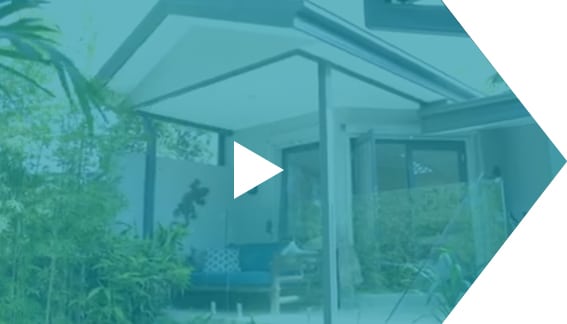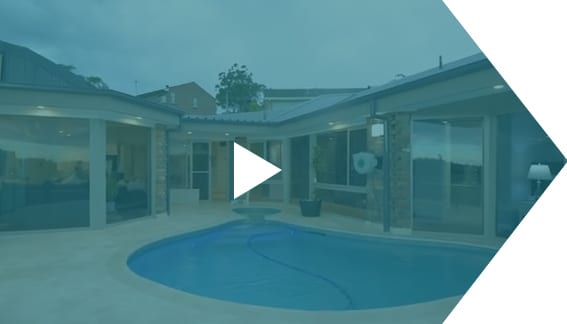Home renovations offer a thrilling opportunity to reshape and expand your living space. Among the most sought-after projects is a ground floor extension Sydney project, which can significantly enhance your home’s functionality and value. However, achieving a successful ground floor extension requires more than just creative design ideas—it demands meticulous attention to engineering and structural integrity.
This blog will guide homeowners through the critical considerations for ensuring that their ground-floor extension is built to last, blending seamlessly with their existing structure while adhering to Sydney’s unique building challenges.
Understanding the Scope of Ground Floor Extension Sydney
Ground floor extensions are famous in Sydney for providing additional living space without altering the overall height. These extensions can take various forms, such as expanding existing rooms, adding new functional spaces, or creating open-plan layouts that improve the flow between indoor and outdoor areas. However, the complexity of such projects varies, and each requires a tailored approach to maintain the structural integrity of your home.
Types of Ground Floor Extensions
- Rear Extensions: These involve extending the rear of the house to create more living space. They are commonly used for expanding kitchens, dining areas, or family rooms.
- Side Extensions: Utilising the side of your property to add a room or extend an existing one is ideal for narrow blocks, which are common in Sydney.
- Wrap-Around Extensions: Combining rear and side extensions creates a larger, more open living area around the home.
- Sunrooms or Conservatories: Add a sunroom or conservatory to blend the indoor living space with the outdoor environment, taking advantage of Sydney’s sunny climate.
The Importance of Structural Integrity in Ground Floor Extension in Sydney
Structural integrity is essential for any construction project, ensuring the building can safely support its load and withstand external forces. For Sydney homeowners considering ground floor extensions Sydney, prioritising structural integrity is crucial for several reasons:
- Safety and Stability
Structural integrity ensures that your extension is safe and stable. A well-designed structure prevents failures that could lead to dangerous collapses, protecting the occupants and ensuring the building can handle daily stresses and environmental forces.
- Longevity and Durability
Focusing on structural integrity means your extension will stand the test of time. It ensures resistance to environmental factors like Sydney’s heavy rains and coastal winds, reducing the need for frequent repairs and minimising long-term maintenance costs.
- Compliance with Building Codes
Adhering to structural standards ensures compliance with local building codes and regulations, which is legally required. This avoids legal issues and fines and ensures your extension meets safety and performance standards, making it a safer investment.
- Enhanced Property Value
A structurally sound extension adds significant value to your property. It increases market appeal, making your home more attractive to potential buyers, and ensures your investment enhances your property’s overall value.
- Energy Efficiency and Sustainability
Structural integrity contributes to energy efficiency by improving insulation and reducing energy costs. Sustainable materials and construction methods in a well-built extension also minimise environmental impact.
- Aesthetic and Functional Integration
A structurally sound extension integrates seamlessly with your existing home, enhancing its appearance and functionality. It allows for creative design solutions that maximise space without compromising safety.
- Peace of Mind
Finally, investing in structural integrity provides peace of mind. You can be confident that your extension is safe, durable, and compliant, reducing stress during and after construction.
Critical Considerations for Structural Integrity
1. Comprehensive Site Analysis and Soil Testing
A successful ground floor extension begins with understanding the site on which it will be built. Sydney’s diverse soil types, ranging from sandy coastal soils to reactive clay in some suburban areas, make soil testing an essential first step. The soil test results will influence the design of the foundation and other structural elements.
- Geotechnical Assessment: Engaging a geotechnical engineer to conduct a soil test will determine the soil’s bearing capacity, moisture content, and potential for movement. This information is crucial for designing a foundation that can withstand the site-specific conditions.
- Environmental Factors: Consider the topography, nearby water bodies, and vegetation, which can all impact the stability and drainage around your extension. In Sydney, properties near bushland or coastal areas may also require special considerations for wind exposure and salt corrosion.
2. Tailored Foundation Design
The foundation is the backbone of any construction project. The type of foundation used will depend on the soil test findings and the extension’s structural requirements.
- Concrete Slab Foundations: Ideal for flat, stable sites, concrete slabs provide a solid base that distributes the weight evenly. They’re common for modern ground-floor extensions in Sydney, particularly in newer suburbs with firm soil conditions.
- Strip Footings: Suitable for sites with less stable soils or where a heavier structure is planned, strip footings provide additional support and are often combined with reinforced concrete slabs.
- Pier and Beam Foundations: This foundation is used in areas with poor soil conditions or a risk of flooding. The piers are driven deep into the ground, bypassing unstable soil layers, and supporting beams are placed on top to distribute the load.
3. Load-Bearing Walls and Structural Modifications
Identifying and modifying load-bearing walls is one of the most critical aspects of a ground-floor extension. These walls support the structure’s weight above, and any changes must be carefully planned to avoid compromising the building’s stability.
- Structural Beams and Columns: Structural beams (usually made of steel) and columns can transfer the load if a load-bearing wall needs to be removed or altered. The choice of materials and the design of these elements should be made in consultation with a structural engineer to ensure they meet the required safety standards.
- Lintels and Archways: When smaller openings are created within load-bearing walls, lintels or archways can be installed to support the structure above the opening.
4. Wind Load and Seismic Design Considerations
Sydney’s coastal location and occasional seismic activity mean that your ground floor extension must be designed to withstand environmental stresses.
- Wind Load Calculations: The extension must resist the lateral forces exerted by strong winds, particularly in exposed coastal areas. This involves calculating wind loads based on local wind speeds and ensuring the structure is braced adequately.
- Seismic Resilience: Although Sydney is not in a high-risk earthquake zone, it is still necessary to design for seismic events. This includes incorporating flexible joints, reinforcing concrete elements, and securely attaching non-structural components (cladding and internal walls).
5. Effective Waterproofing and Drainage Systems
Sydney’s weather can be unpredictable, with periods of heavy rain followed by dry spells. Proper waterproofing and drainage are essential to protect your extension from water damage.
- Waterproofing Membranes: Install waterproofing membranes under the floors and behind walls exposed to moisture. This will prevent water ingress, which can lead to structural damage and mould growth.
- Drainage Planning: Implementing a well-designed drainage system around your ground floor extension is crucial. This includes grading the ground to direct water away from the foundation, installing gutter systems, and ensuring that downpipes are correctly connected to stormwater drains.
6. Optimising Thermal Insulation and Energy Efficiency
Thermal insulation is not only about comfort; it’s also a critical factor in the structural integrity of your extension. Proper insulation prevents condensation within walls, which can lead to rot and degradation of building materials over time.
- Insulation Materials: Consider using high-performance insulation materials such as polyurethane foam, wool, or rigid foam boards. These materials provide excellent thermal resistance and contribute to your home’s overall energy efficiency.
- Energy-Efficient Windows and Doors: Double-glazed windows and insulated doors will enhance energy efficiency. These elements reduce heat transfer, helping to keep your home warm in winter and cool in summer while also reducing energy costs.
7. Adherence to Building Codes and Compliance
Navigating Sydney’s building codes and regulations is a complex but necessary part of the extension process. Compliance ensures that your ground floor extension is safe and legal and that you are less likely to encounter issues down the line.
- Development Applications (DAs): Depending on the scope of your project, you may need to submit a Development Application to your local council. This process involves providing detailed plans and reports, including engineering assessments, to demonstrate that your extension meets local planning controls.
- Construction Certificates (CCs): Once your DA is approved, you’ll need a Construction Certificate before building can commence. This certifies that your plans comply with the Building Code of Australia (BCA) and local regulations.
8. Sustainable Material Selection
Sustainability is becoming increasingly important in home renovations, and your choice of materials can significantly impact your extension’s environment and durability.
- Recycled and Reclaimed Materials: Using recycled timber, reclaimed bricks, or recycled concrete reduces the environmental impact of your project and can also add unique character to your extension.
- Low-Emission Materials: Choose low-VOC (volatile organic compound) paints, sealants, and adhesives to improve indoor air quality and reduce your extension’s environmental footprint.
- Eco-Friendly Insulation: Materials like wool, cotton, or cellulose insulation are sustainable alternatives to traditional fibreglass insulation, offering both environmental benefits and effective thermal performance.
9. Engaging with a Structural Engineer
Engaging with a qualified structural engineer early in the planning process is crucial for ensuring that your ground floor extension is structurally sound. An engineer will assess the existing building, design the necessary structural elements, and guide materials and construction methods.
- Engineering Design Reports: These reports detail the calculations and design principles used to ensure your extension can withstand the loads and stresses it will encounter. They are essential for obtaining building permits and ensuring compliance with regulations.
- Construction Supervision: Involving your engineer throughout the construction phase can help identify potential issues early and ensure the building is constructed according to the approved plans.
10. Future-Proofing Your Ground Floor Extension
While planning your ground-floor extension, consider how your needs might change over time. Future-proofing your design can save time and money in the long run, whether accommodating a growing family, adapting to future technological advancements, or even preparing for further extensions.
- Flexible Layouts: Designing open-plan spaces with movable partitions or multi-functional rooms can provide flexibility for future home use changes.
- Smart Home Integration: Installing wiring and infrastructure for smart home systems can make your extension more adaptable to future technology, enhancing convenience and energy efficiency.
- Sustainable Design: Incorporating solar panels, rainwater harvesting systems, and energy-efficient appliances can make your home more sustainable and reduce ongoing costs.
FAQs
Q: What are the most common issues that can affect the structural integrity of a ground floor extension in Sydney?
A: Common issues include inadequate foundation design, poor soil conditions, water ingress due to improper waterproofing, and non-compliance with building codes. Engaging with experienced professionals and conducting thorough site assessments can help mitigate these risks.
Q: How can I ensure my ground floor extension is sustainable and environmentally friendly?
A: You can enhance sustainability by selecting eco-friendly materials, incorporating energy-efficient designs, and considering renewable energy sources like solar power. Consulting with an architect or engineer experienced in sustainable design can also help guide your choices.
Q: What should I do if my home is in a heritage area of Sydney?
A: Homes in heritage areas may have additional restrictions on extensions. It’s essential to consult with your local council and engage with a heritage architect to ensure that your extension respects the area’s character and complies with all relevant regulations.
Q: Do I need a structural engineer for a small ground-floor extension?
A: Yes, even for smaller projects, a structural engineer can provide valuable insights into the load-bearing requirements and help ensure the extension is safe and compliant with building codes.
Conclusion
Building a ground floor extension Sydney is an exciting endeavour that offers the potential to enhance your living space significantly. However, to ensure the success and longevity of your project, it’s essential to prioritise engineering excellence and structural integrity. By conducting thorough site assessments, engaging with experienced professionals, and adhering to local building codes, you can create a safe, durable, and beautiful extension that enhances your home and lifestyle.
Call us today on 02 97363344 or contact us online for a free consultation.












